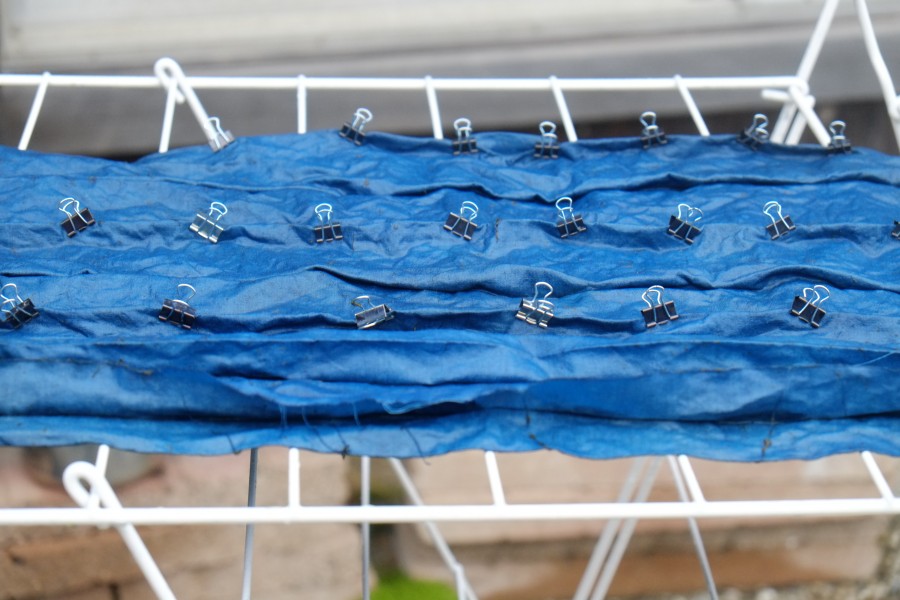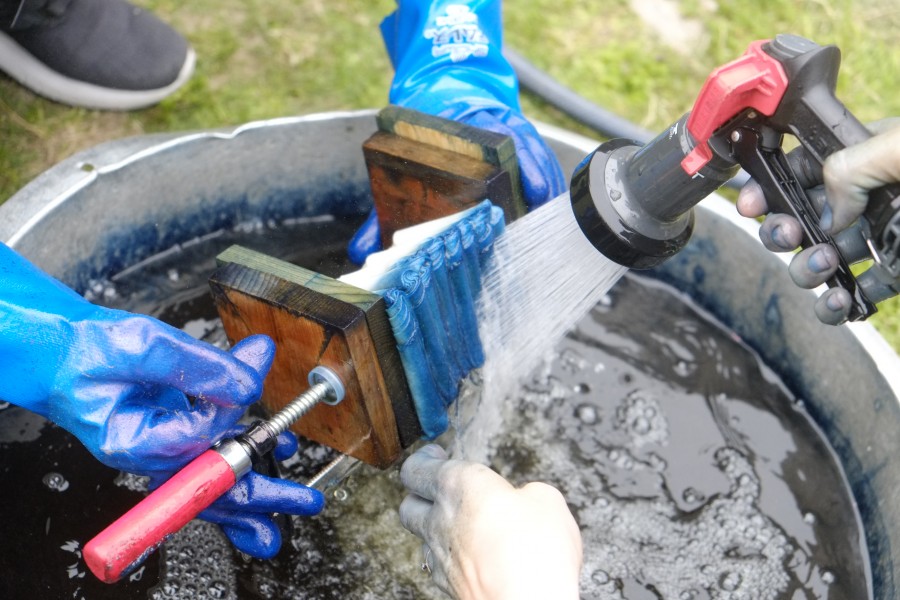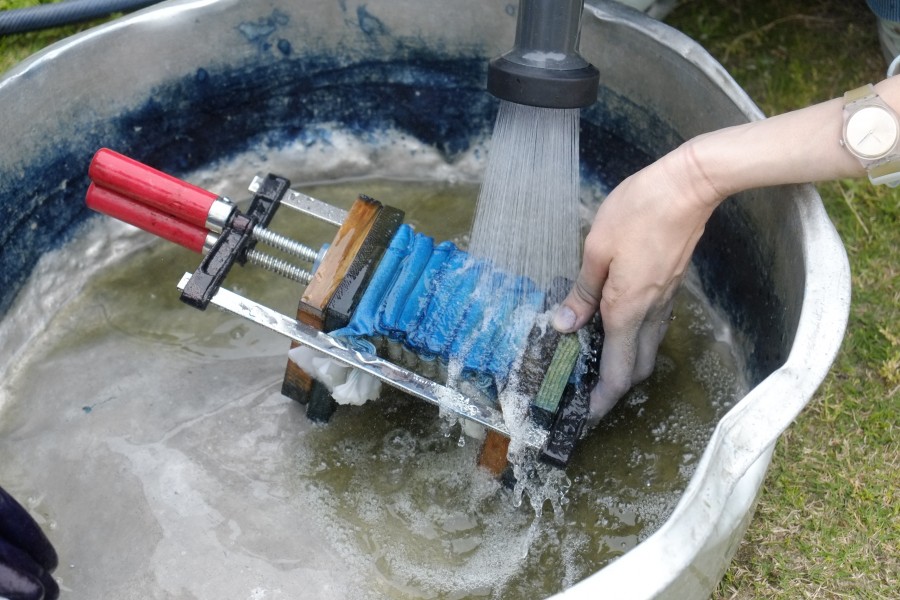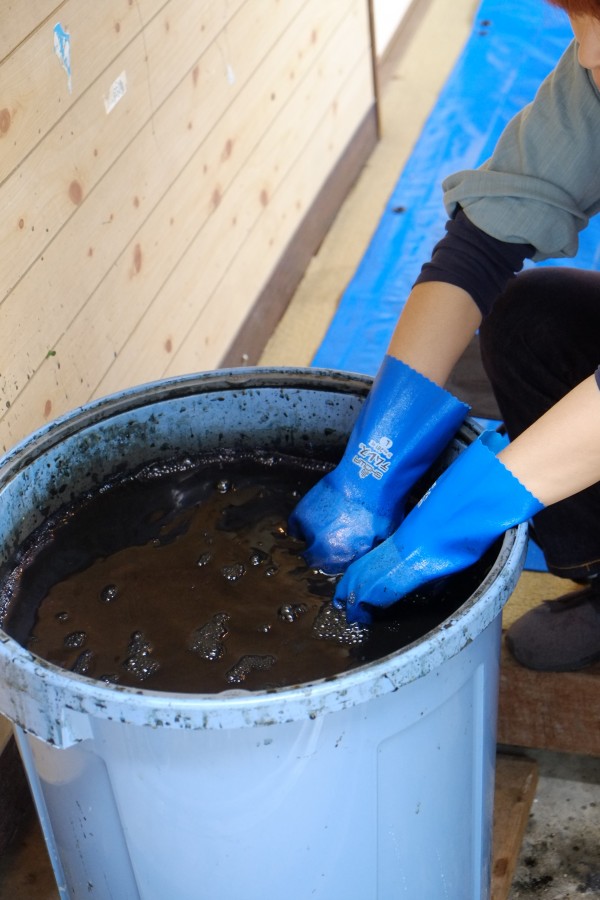Posts
Our lovely friends from Awaji Bee Wrap came over to experiment with making fabric for their bee wrap.
They made 3 pieces with different techniques in our 100% natural ‘sukumo’ vat.

Little bee shapes are made from pleating the fabric and clipping stationary clips onto it. Bold stripes are made by folding and clamping. Honeycomb/ hexagons / zig-zag are made by folding and clamping.
I think this piece was dipped at least 5 times to make a rich dark blue. You can use a ‘stronger’ vat and fewer dips to achieve the same colour but received wisdom is that more dips in a ‘weaker’ vat achieve a more even and longer lasting colour.

The variation in blues on this piece come from where parts of the fabric are ‘inside’ , folded or tucked into other layers. they need exposure to the indigo and exposure to oxygen in order to get dark blue. It is hard for the inside layers to get both oxygen and indigo. The oxygen can be from fresh water or from air. We usually rinse the piece in fresh water as soon as it comes out the vat to oxyginate it, swish it around and open up areas we want to expose, we then lay it out and look in the nooks and crannies for yellow/green areas that still need oxyginating.

We are still working on this question!
While our friend was happy with the pattern that she got (mostly white) , it has a hint of honeycomb, but not really what we hoped. The principle is fold the fabric into a concertina / pleat it, then fold that long thin strip into equilateral triangles. We did that, but then the dye has trouble penetrating into the deeper layers when the fabric is large.
I think another issue was possibly the closeness of the weave on the plain cotton we were using.


For natural indigo, we don’t wear gloves. It is safe to touch our indigo, as the only ingredients are fermented indigo leaves (sukumo) and ash. The indigo will dye your hands blue for a week or so, and fingernails for longer. If you have any open wounds it will sting so then I would recommend gloves.
Many people making shibori items use ‘chemical indigo’ this is not safe to touch. We also sometimes work with chemical indigo, and then we always wear gloves.

This technique is a kind of simple ‘itajime’ shibori. It is simply folded into concertina and clamped with 2 long planks. Make sure your vat/bucket is big enough to immerse the whole thing first. In order to achieve an even colour, the flaps of fabric need to be alternately opened up and exposed to both indigo and oxygen.


AWAJI / SHIKOKU
ART
AWAJI / SHIKOKU
AWAJI / SHIKOKU